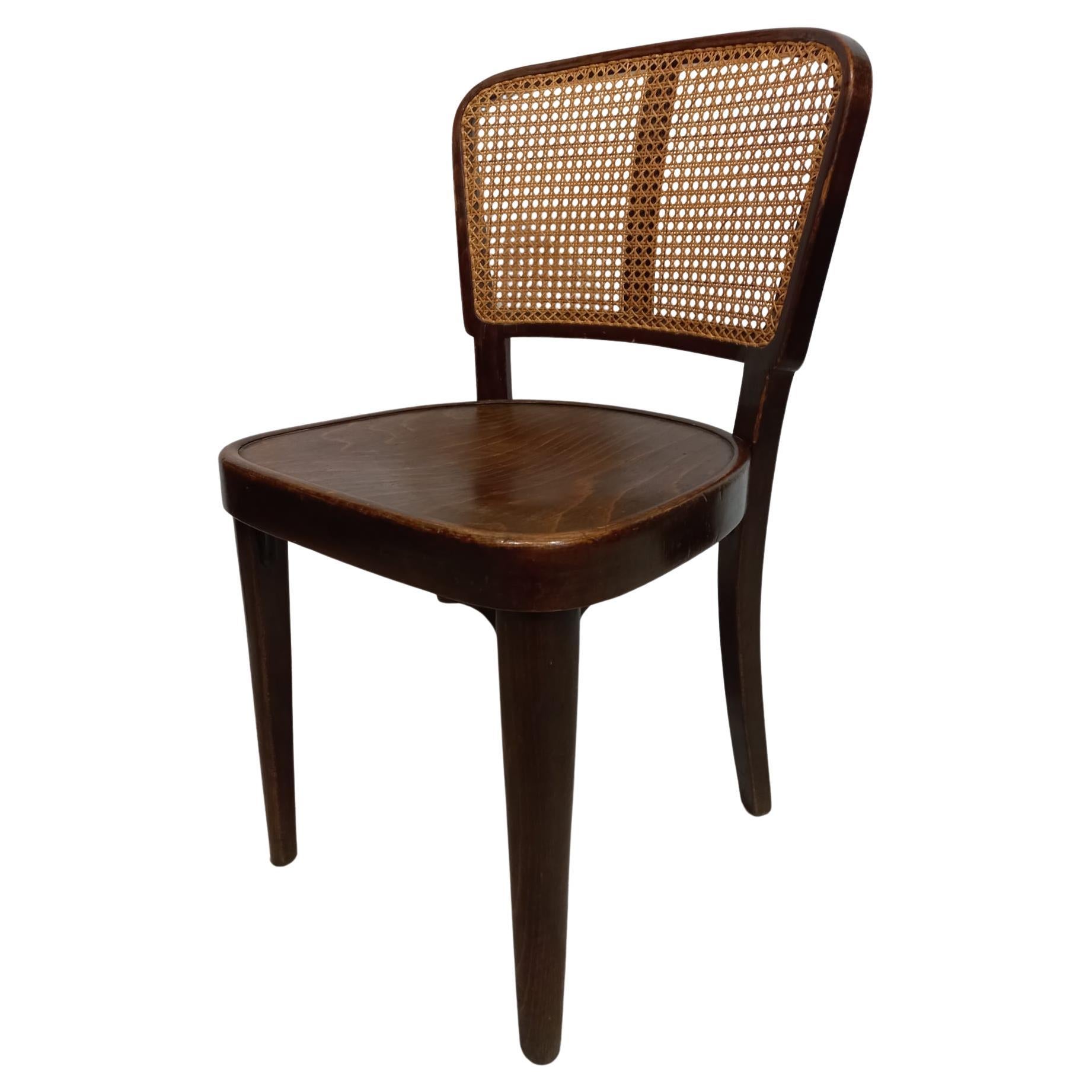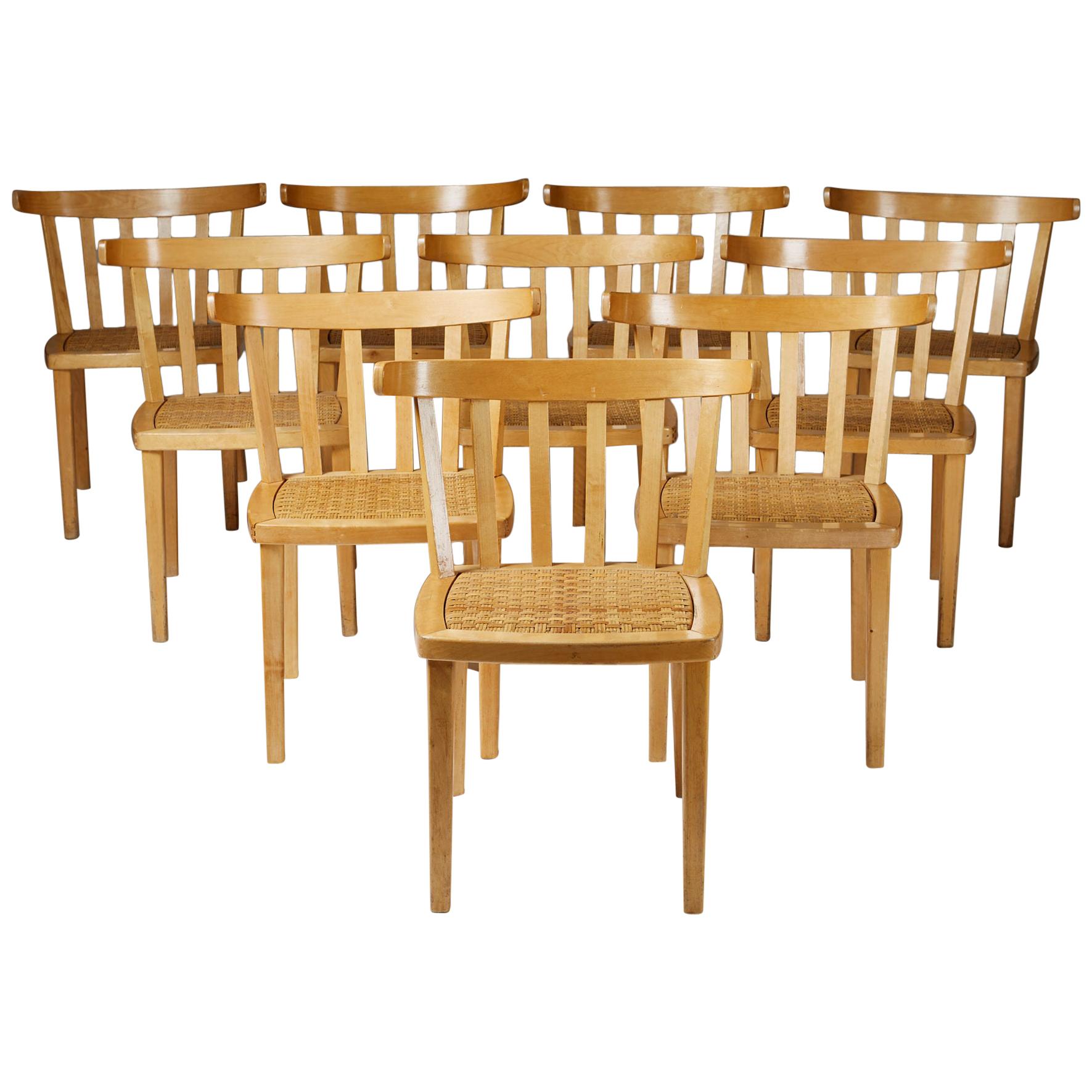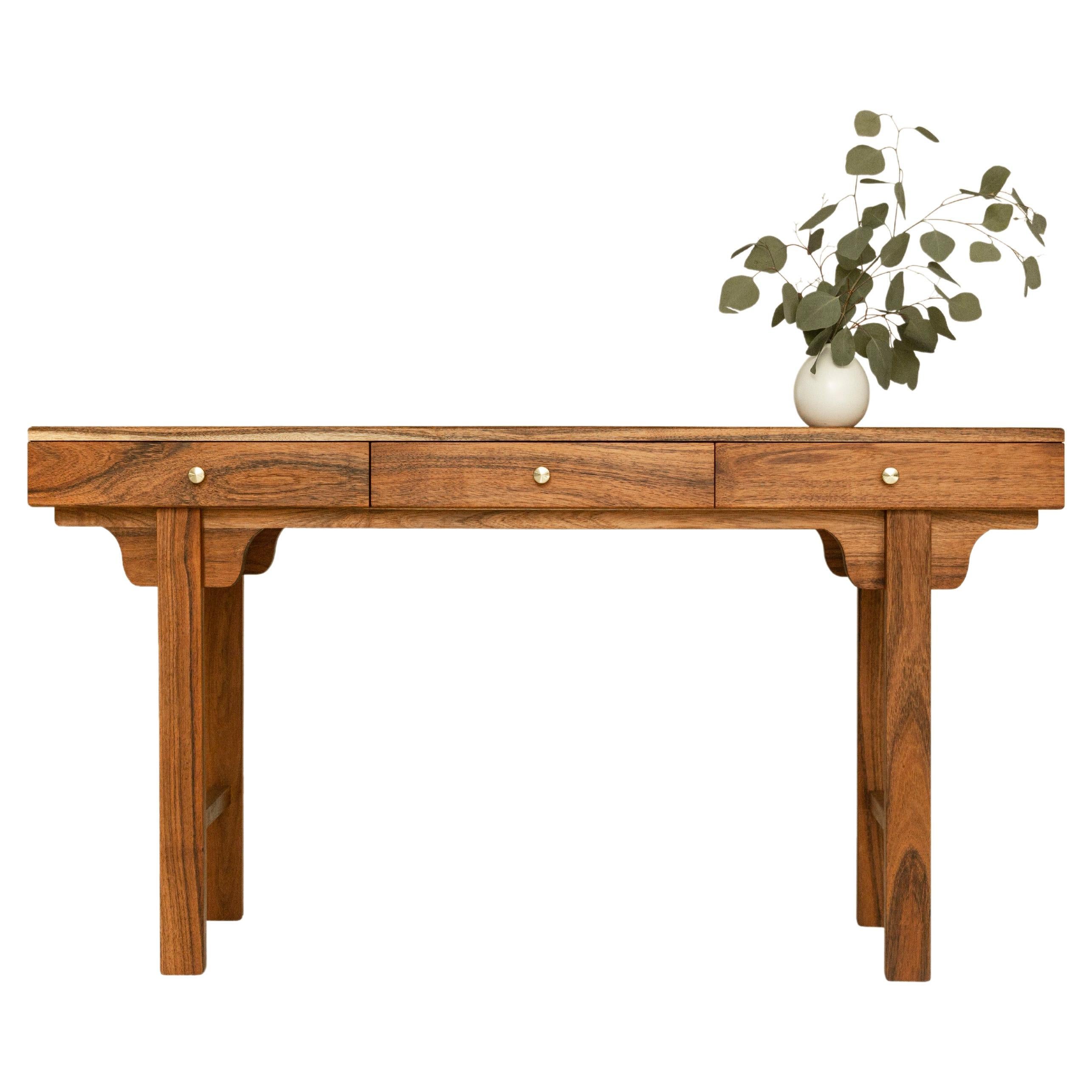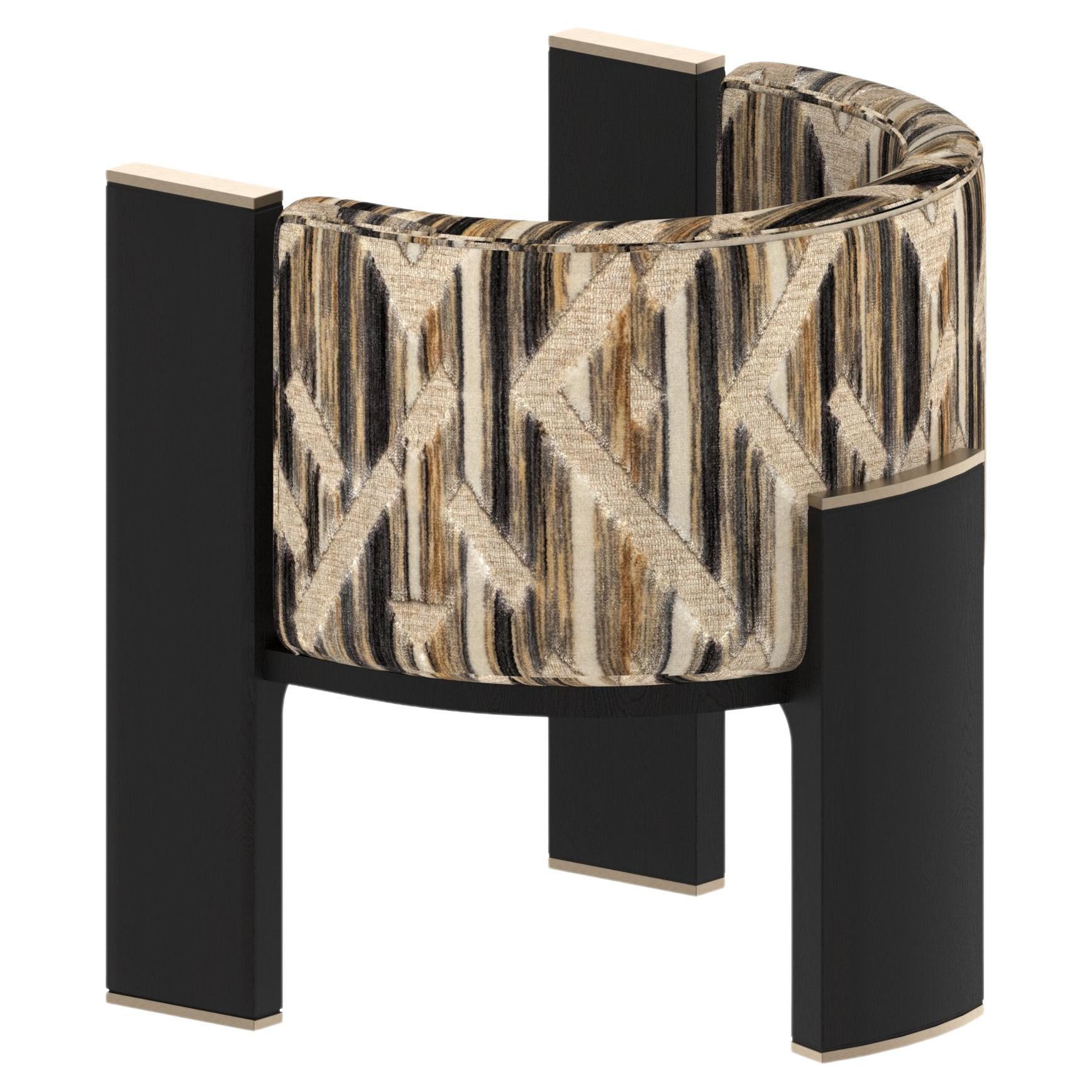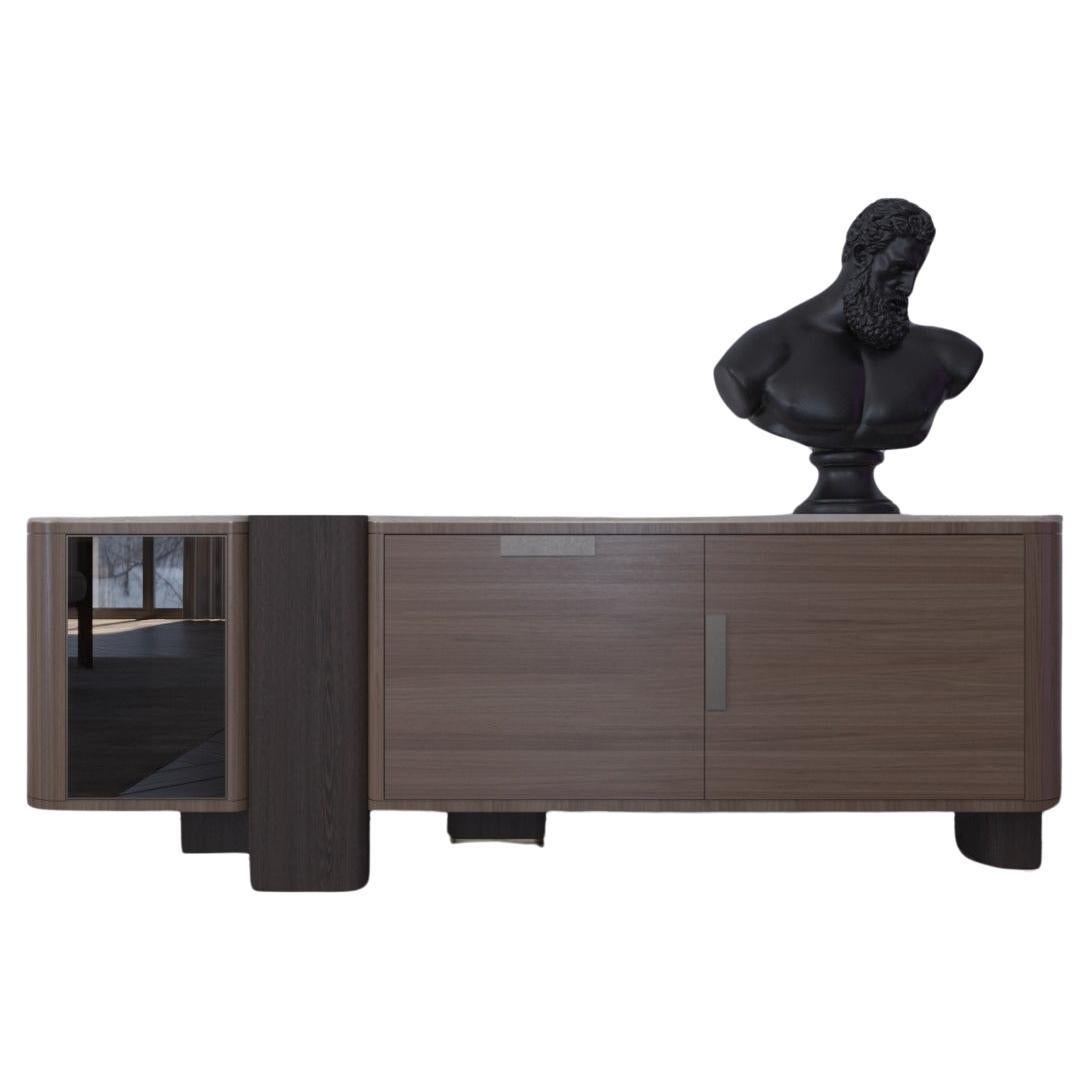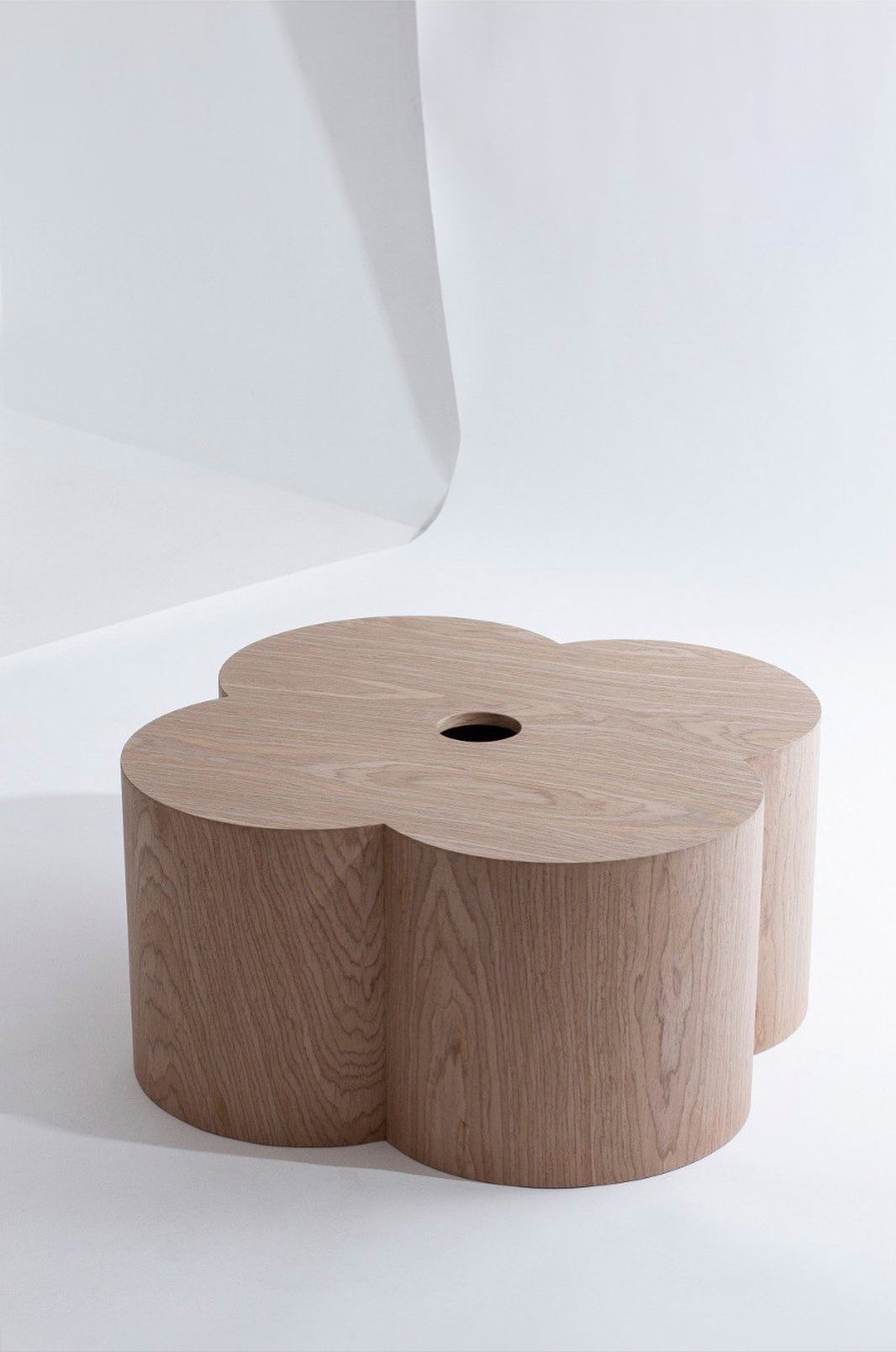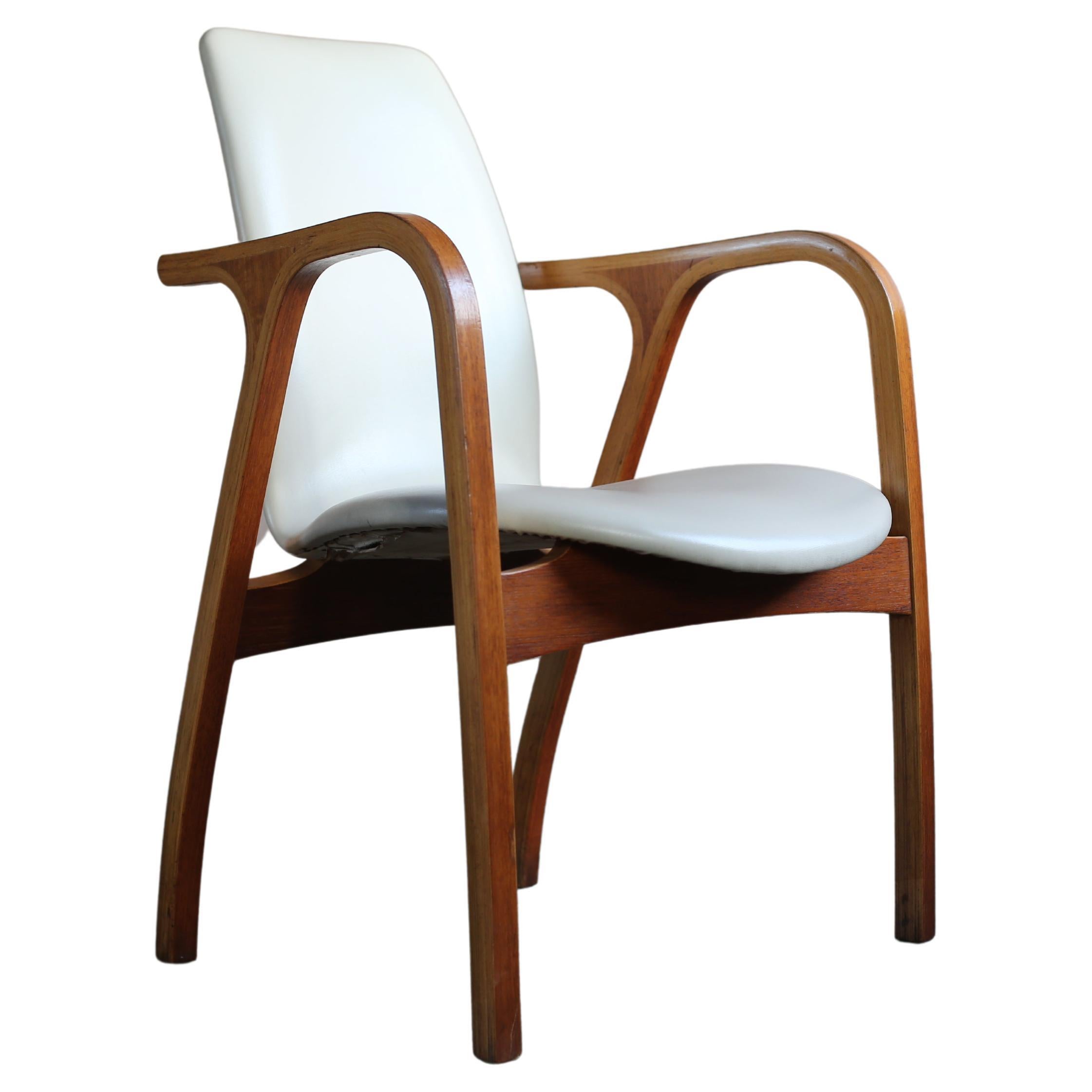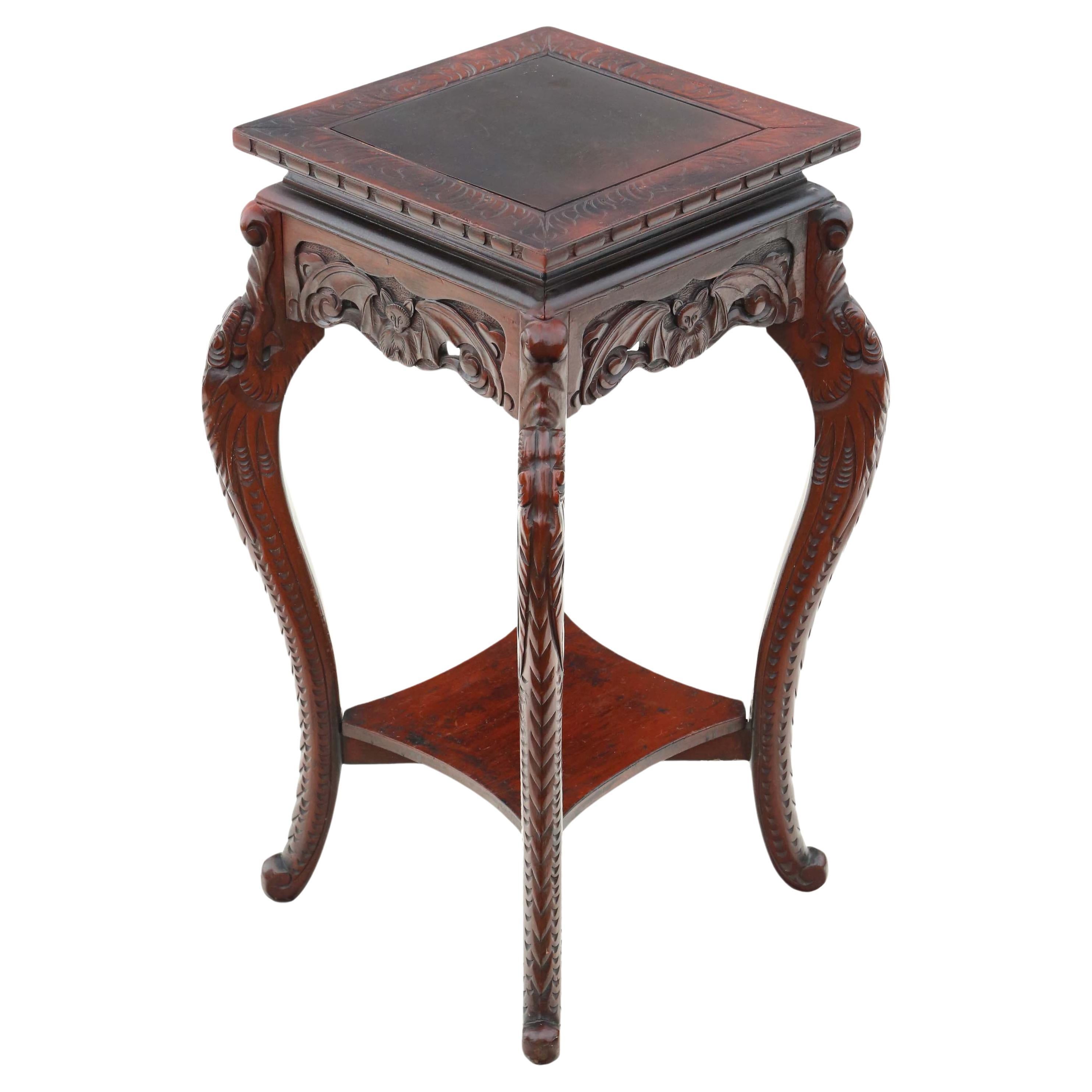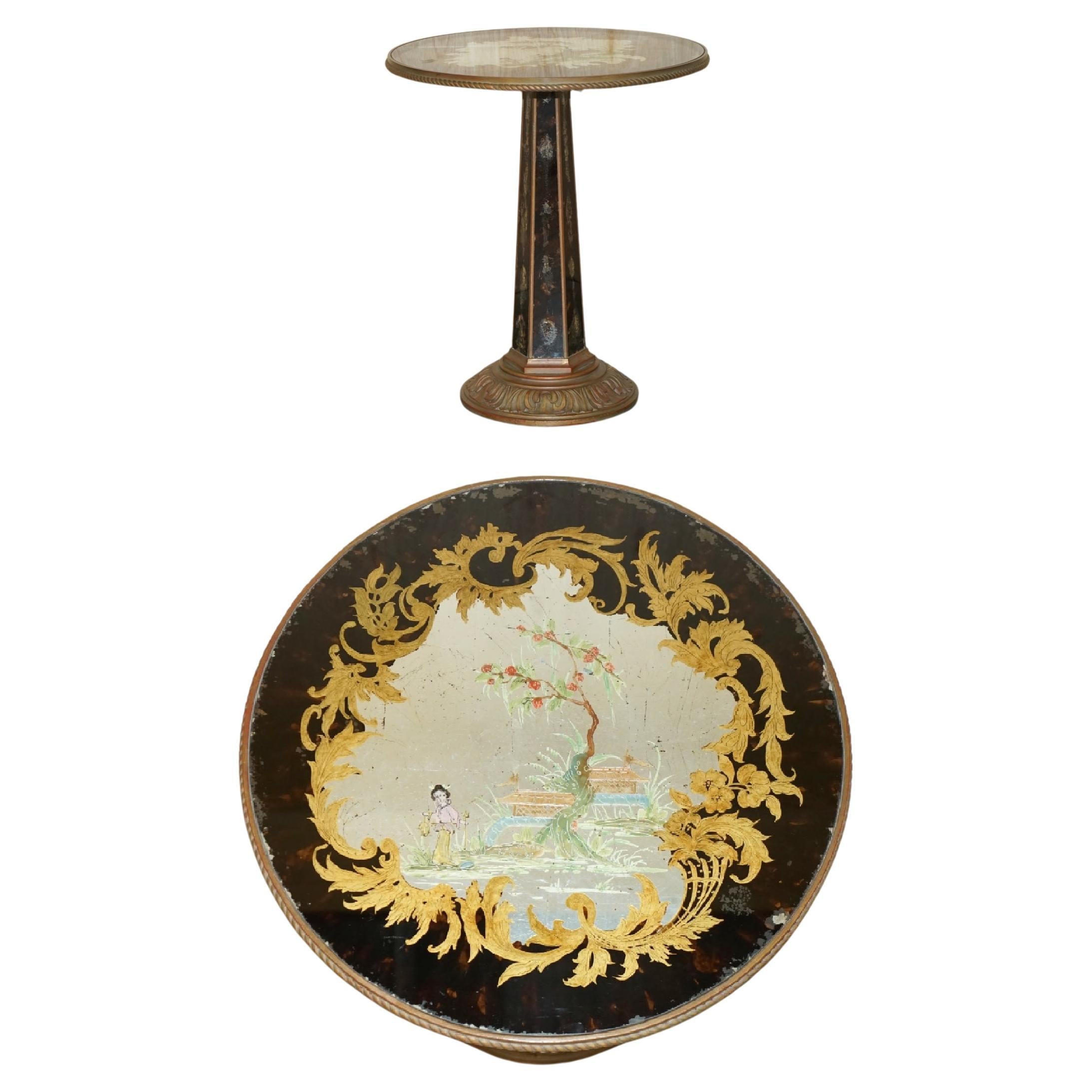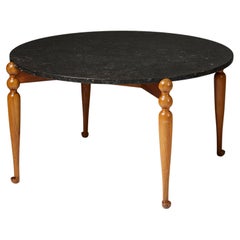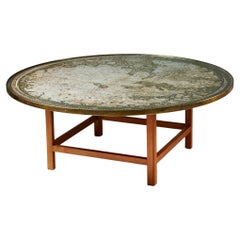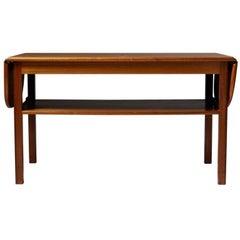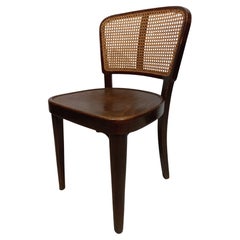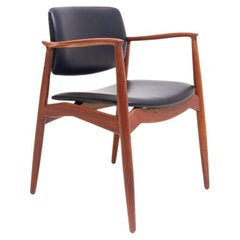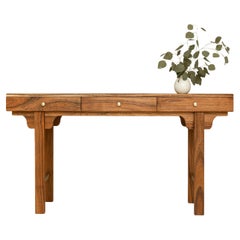
Occasional Table Model 1074 Designed by Josef Frank for Svenskt Tenn
View Similar Items
Occasional Table Model 1074 Designed by Josef Frank for Svenskt Tenn
About the Item
- Creator:Josef Frank (Designer)
- Dimensions:Height: 23.04 in (58.5 cm)Width: 31.5 in (80 cm)Depth: 31.5 in (80 cm)
- Style:Scandinavian Modern (Of the Period)
- Materials and Techniques:
- Place of Origin:
- Period:
- Date of Manufacture:1950s
- Condition:
- Seller Location:Stockholm, SE
- Reference Number:1stDibs: LU100665781603
Josef Frank
Austrian architect and furniture and fabric designer Josef Frank was a leading voice for a gentle, humane modernism. His advocacy of warm, comfortable, eclectically styled environments was highly influential in his adopted country of Sweden, and it’s now widely regarded as a harbinger of the backlash against doctrinaire modernism and the embrace of the homespun that occurred in the late 1960s.
The son of a successful Viennese textile manufacturer, Frank studied architecture at Vienna University of Technology, graduating in 1910. From the first years of his practice, he marched counter to the orderly, symmetrical architectural layouts and decors prescribed by contemporaries such as Adolf Loos.
Frank drafted rooms of varying shapes and called for flexible interior-design arrangements. His furniture pieces are light and easy to move — and his chairs are always made of wood, most often with lushly curved steam-bent arms and slatted backs. Frank openly loathed the tubular steel furnishings and “machine for living” aesthetic promoted by Le Corbusier and Ludwig Mies van der Rohe and other Bauhaus principals. “The home must not be a mere efficient machine,” Frank once said. “It must offer comfort, rest and coziness…. There are no puritan principles in good interior decoration.”
Frank — who was Jewish — sensed the dire implications of the rise of Nazism in Germany and Austria, and in 1933 he moved to Stockholm with his Swedish wife, Anna. He became the design chief for the furnishings maker Svenskt Tenn and found a perfect match culturally for his brand of simple, relaxed and bright creations. Like many modernists — notably Charles and Ray Eames and Alexander Girard — Frank had a deep love of folk art, which influenced his designs for a wide array of colorful, richly patterned upholstery fabrics, many based on the classic “Tree of Life” motif.
In all his designs, Frank took inspiration from a broad variety of sources. In his furniture, one can discern traces of Asian patterns, Rococo, Italian Renaissance, Scandinavian handicrafts and even Chippendale pieces. As such, the work of Frank — the friendly modernist — is at home in any type of décor.
Find vintage Josef Frank pillows, armchairs, floor lamps and other furniture on 1stDibs.
- Occasional Table Model 2168 Designed by Josef Frank for Svenskt TennBy Josef FrankLocated in Stockholm, SEOccasional table model 2168 designed by Josef Frank for Svenskt Tenn, Sweden. 1950s. Walnut and marble. Josef Frank’s occasional table “model 2168” is one of his rarer models. Its beautifully carved, turned legs...Category
Mid-20th Century Swedish Mid-Century Modern Tables
MaterialsMarble
- Occasional table model U 601 designed by Josef Frank for Svenskt Tenn, SwedenBy Josef Frank, Svenskt TennLocated in Stockholm, SEOccasional table model U 601 designed by Josef Frank for Svenskt Tenn, Sweden, 1960s / 1970s. Mahogany, glass and brass. The map is a replica of the world map drawn by the Venetian...Category
Mid-20th Century Swedish Mid-Century Modern Coffee and Cocktail Tables
MaterialsBrass
- Occasional Table Designed by Josef Frank for Svenskt Tenn, Sweden, 1950sBy Josef FrankLocated in Stockholm, SEOccasional table designed by Josef Frank for Svenskt Tenn, Sweden, 1950s. Mahogany. Measurements: H: 60 cm/ 23 1/2'' Length when extened: 104 cm/ 3' 5'' D: 54 cm/ 21 1/2'' Jose...Category
Vintage 1950s Swedish Scandinavian Modern Side Tables
MaterialsMahogany
- Occasional Table Designed by Josef Frank for Svenskt Tenn, Sweden, 1950sBy Josef FrankLocated in Stockholm, SEOccasional table designed by Josef Frank for Svenskt Tenn, Sweden. 1950s. Mahogany. H: 45 cm L: 80 cm D: 40 cm Josef Frank was a true European, he was also a pioneer of what would become classic 20th century Swedish design and the “Scandinavian Design Style”. Austrian- born Frank started his design career as an architect after having trained at the Technische Hochschule in Vienna between 1903 and 1910. After his training he went on to teach at Kunstgewerbeschule (The Viennese School of Arts and crafts) where he developed and espoused the new school of modernist thinking towards Architecture and Design that was coming to fruition in Vienna at the time. He also went on to lead the Vienna Werkbund throughout the 1920s. This was a truly progressive group of Architects and Designers who set about improving the daily lives of Austrian people through modernist design and architecture in partnership with Arts and Crafts ideals and construction. Frank’s leadership of the Werkbund had already cemented his place at the forefront of European design. Frank’s time in Vienna was typified by his design for the “Die Wohnung” exhibition of the Deutscher Werkbund in Stuttgart, 1927 where he exhibited along side his contemporaries at the forefront of design, such as the likes of Le Corbusier and Walter Gropius. Here he showed a specially designed pair of flat-roofed reinforced concrete houses in what is now seen as a typical modernist style. What separated Frank’s house from the other 32 houses of the exhibition was the interior and furniture inside the building. It was described as “Neo-Classical” and filled with an eclectic mix of period pieces, modern design and pieces designed by Frank himself that seemed to cross the two worlds. This was a complete opposite direction to that which his fellow Architects were travelling in with their pared back and angular aesthetics. Frank said of his own work: “The house is not a work of art, simply a place where one lives,” and by this reasoning Frank rejected the regimental mechanisation of the living space that his contemporaries believed in, instead he set about creating congenial and spontaneous interiors. Frank’s practice saw him placing the bright colours and the soft forms of nature back into the furnishings and interiors that he thought modernism sorely mist. Frank, along with Oskar Walch set up Haus und Garten in Vienna in 1925. This was Frank’s first commercial foray into furniture and home furnishings and the company went on to become the most influential furnishing house in Vienna with a riotous depth of colour and interesting shapes becoming the trademark of their design. However this success was to come to an end with rise of Nazism in Vienna in the early 1930’s. Frank was Jewish, and he and his wife Anna decided they would leave Vienna for her motherland: Sweden, in 1933. Frank continued to design for Haus and Garten, visiting Vienna occasionally and designing the pieces that would continue to be the company’s best...Category
Vintage 1950s Swedish Scandinavian Modern Tables
MaterialsMahogany
- Bedside Table Model ‘914’ Designed by Josef Frank for Svenskt Tenn, SwedenBy Josef FrankLocated in Stockholm, SEBedside table model 914 designed by Josef Frank for Svenskt Tenn, Sweden, 1950s. Mahogany veneer and brass handle. Josef Frank’s elegant bedside table model 914 with sophisticated ...Category
Mid-20th Century Swedish Mid-Century Modern Side Tables
MaterialsBrass
- Table lamp model 2552 designed by Josef Frank for Svenskt Tenn, Sweden. 1950sBy Josef FrankLocated in Stockholm, SEBrass. Table Lamp Model 2552 Designed by Josef Frank for Svenskt Tenn, Sweden, 1950s Measures: H 49.5 cm Josef Frank was a true European, he was also a pioneer of what would become classic 20th century Swedish design and the “Scandinavian Design Style”. Austrian- born Frank started his design career as an architect after having trained at the Technische Hochschule in Vienna between 1903 and 1910. After his training he went on to teach at Kunstgewerbeschule (The Viennese School of Arts and crafts) where he developed and espoused the new school of modernist thinking towards Architecture and Design that was coming to fruition in Vienna at the time. He also went on to lead the Vienna Werkbund throughout the 1920s. This was a truly progressive group of Architects and Designers who set about improving the daily lives of Austrian people through modernist design and architecture in partnership with Arts and Crafts ideals and construction. Frank’s leadership of the Werkbund had already cemented his place at the forefront of European design. Frank’s time in Vienna was typified by his design for the “Die Wohnung” exhibition of the Deutscher Werkbund in Stuttgart, 1927 where he exhibited along side his contemporaries at the forefront of design, such as the likes of Le Corbusier and Walter Gropius. Here he showed a specially designed pair of flat-roofed reinforced concrete houses in what is now seen as a typical modernist style. What separated Frank’s house from the other 32 houses of the exhibition was the interior and furniture inside the building. It was described as “Neo-Classical” and filled with an eclectic mix of period pieces, modern design and pieces designed by Frank himself that seemed to cross the two worlds. This was a complete opposite direction to that which his fellow Architects were travelling in with their pared back and angular aesthetics. Frank said of his own work: “The house is not a work of art, simply a place where one lives,” and by this reasoning Frank rejected the regimental mechanisation of the living space that his contemporaries believed in, instead he set about creating congenial and spontaneous interiors. Frank’s practice saw him placing the bright colours and the soft forms of nature back into the furnishings and interiors that he thought modernism sorely mist. Frank, along with Oskar Walch set up Haus und Garten in Vienna in 1925. This was Frank’s first commercial foray into furniture and home furnishings and the company went on to become the most influential furnishing house in Vienna with a riotous depth of colour and interesting shapes becoming the trademark of their design. However this success was to come to an end with rise of Nazism in Vienna in the early 1930’s. Frank was Jewish, and he and his wife Anna decided they would leave Vienna for her motherland: Sweden, in 1933. Frank continued to design for Haus and Garten, visiting Vienna occasionally and designing the pieces that would continue to be the company’s best...Category
Vintage 1950s Swedish Scandinavian Modern Table Lamps
MaterialsBrass
- Thonet 1930s Chair by Josef HoffmannLocated in Vienna, ATThonet 1930s Chair by Josef Hoffmann or Josef Frank, good original condition, Vienna AustriaCategory
Vintage 1930s Furniture
MaterialsWood
- Model 67 Captain Chair by Erik Buch for Ørum MøblerBy Ørum Møbler, Erik BuchLocated in London, ONThe Model 67 Captain Chair by Erik Buch for Ørum Møbler is a timeless and elegant piece of furniture that will elevate the style of any room. Crafted with the utmost attention to det...Category
Vintage 1960s Danish Mid-Century Modern Furniture
MaterialsUpholstery, Teak
- Aldora Side Table Designed by Tana KareiBy Tana KareiLocated in Ciudad De México, MXThe Aldora side table is made out of a Mexican wood called Tzalam- it is all hand made and finished with Rubio Monocoat Oil. It has three drawers and makes the perfect compliment to ...Category
2010s Mexican Mid-Century Modern Furniture
MaterialsWalnut
- Emerald Chair Design for CapellaLocated in İnegöl, TRAs Capella, our job is to ensure the perfect harmony between materials and present them to you in the most accurate and harmonious way. We give them a soul and life. The designer's ...Category
21st Century and Contemporary Turkish Modern Furniture
MaterialsWood
- Emerald Sideboard Design for CapellaLocated in İnegöl, TRAs Capella, our job is to ensure the perfect harmony between materials and present them to you in the most accurate and harmonious way. We give them a soul and life. This is our firs...Category
21st Century and Contemporary Turkish Country Furniture
MaterialsAcrylic, Wood, Oak, Walnut
$3,400 Sale Price20% Off - Modern Oak Veneer Minimalist Table: Sleek Design for Contemporary Living SpacesLocated in Vilnius, LTDESCRIPTION This table is a combination of architectural symmetry and playful character. It is covered with oak veneer - a pleasant to the touch natural material. Table is a piece of...Category
21st Century and Contemporary Minimalist Furniture
MaterialsWood, Oak
